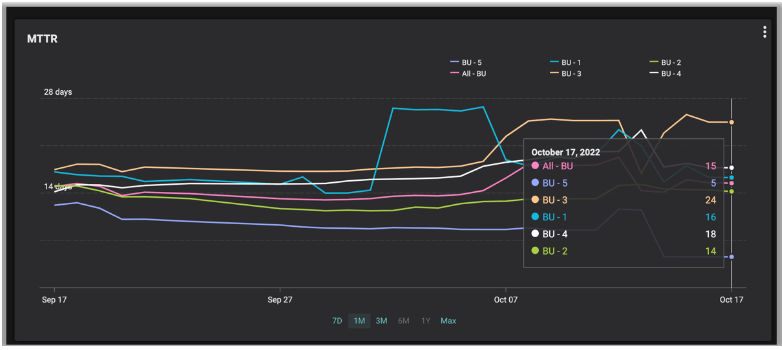

February 14, 2023
“The line between disorder and order lies in logistics …” Sun Tzu
“The line between disorder and order lies in data driven analytics …” modern cybersecurity
One of the most important weapons of Alexander the Great was analytics and logistics. He gathered intelligence on the enemy’s weapons, supply sources, food stores, strategy, tactics, and performance in previous battles to understand their strengths and weaknesses. He used this information to strategize the number of soldiers, the formation, positioning, and supplies needed to win. A prime example is the Battle of Gaugamela in 331 BC, where Alexander faced Darius III of Persia. Darius had a million soldiers, 15 war elephants and 200 scythe-bladed chariots against Alexander’s army of just 40,000 soldiers. Despite Darius’ might, Alexander’s data-driven strategy allowed him to overcome the odds. For instance, as the Persian chariots charged, Alexander’s army opened lanes for them to pass through, making it easier for his archers to destroy them.
Metrics and modern cybersecurity are inherently linked. CISOs use metrics to determine priorities, inform decisions, support investments, track progress and maintain accountability. If incorrect metrics are chosen (like the numerical strength that Darius relied on in Gaugamela), it can give a false sense of progress and will lead to a weakening of the organization’s overall cybersecurity posture.
In this blog, I delve into the importance of using metrics and look into the use of a popular metric, Mean Time To Remediate (MTTR); sometimes the only operational metric used to measure the efficacy of vulnerability management. Further, we will deep dive into a metric Balbix introduced known as Mean Open Vulnerability Age (more about it later).
Security teams must identify and address threats as soon as feasible in order to safeguard their organization against cyberattacks and data breaches. The difference between a minor attack and a disastrous data breach often lies in how quickly vulnerabilities are remediated. The traditional metric used to measure this is Mean Time to Remediate (MTTR). MTTR is considered to be one of the key cybersecurity metrics. Security teams are constantly pursuing to drive down this number.
And while we agree that measuring MTTR is certainly important, our work with our customers has uncovered a truth that isn’t widely known by many in the industry.
Yes, you heard it right! But before we get to the root of this assertion, let’s get past the fundamentals.
MTTR is the average time taken by security teams to establish a response and remediate a detected vulnerability or a threat. In simple terms, MTTR measures the period between the time when the vulnerability was found in an asset and the time when it was remediated. This data is then aggregated to calculate the mean time it takes to fix all discovered vulnerabilities in a given environment.
Now, why do we say that relying on MTTR alone is a flawed approach?
To answer this, let’s think of a situation where a security team is dealing with a huge backlog of vulnerabilities. Hypothetically, no new vulnerabilities have been remediated during the last year. The organization wants to improve the status quo and hires John as a vulnerability manager. Consider the following alternative scenarios for how John possibly approaches his role:
Being new to the organization, John wants to earn some quick wins and reduce overall cybersecurity risk. He looks at the vulnerabilities list and decides to take immediate action to remediate the oldest vulnerabilities. These have been open for one year. This action will drive the overall MTTR up. Why would this happen? It’s because fixing the year-old vulnerabilities will drive the total time taken to remediate vulnerabilities up by 365 days for all the older vulnerabilities that John fixed. John’s intentions were spot-on but with the MTTR going up, he now faces a lot of uncomfortable questions from his leadership about the organization’s cyber security status.
Alternatively, John decides that he should start by remediating only the new vulnerabilities, the ones that were found in the last 30 days. He postpones remediating the oldest ones. In just a few days, his team works hard to remediate the new vulnerabilities. This action will drive the MTTR down. John and his team may receive appreciation from leadership but deep down he knows that there is a huge vulnerability backlog. This situation will drive cyber risk up as the attackers can exploit any of the open vulnerabilities. The longer a vulnerability is open, the more likely it is to be exploited.
John may decide to remediate only recent critical vulnerabilities and choose to not remediate any other vulnerabilities. This strategy is typically followed in war-time situations where the attention turns to urgently identifying and deploying patches or quick mitigations to fix critical vulnerabilities before attackers can cause serious damage to the organization. This approach will drive the MTTR down because only a short time elapsed between remediated date and found date. This approach will help contain the war-time risk of in-the-wild vulnerabilities but the overall cyber risk will remain high because, like Scenario 2, there is still a huge backlog of open vulnerabilities to be remediated.
To augment these scenarios, let’s consider a real-life example from one of our Fortune 500 customers:
1. During a given month, the MTTR moved in a range between 5 to 24 days. This relatively low MTTR gave the security team the impression that it had their cyber risk well under control.

2. But the benefit of a low MTTR wasn’t reflected in their Balbix risk dashboard. It showed a rather grim reality: breach risk in excess of $250M, which was way beyond the customer’s risk threshold. What was really happening here?

3. A quick analysis of their Balbix dashboard revealed the hidden truths.

4. The result is that their approach drove MTTR to world-class levels but a long list of unaddressed vulnerabilities contributed to cyber risk rising to an alarming amount.
These scenarios bring to the fore the lack of correlation between MTTR and cyber risk. Organizations relying on MTTR alone as a way of tracking their cyber risk may end up incentivizing undesirable behavior. Teams focus on driving the measured metric (MTTR) down, while permitting actual cyber risk to spike. It also conveys a false sense of the true effectiveness of an organization’s vulnerability management program.
To address the above-stated flaws, Balbix recently introduced a new metric in our platform called MOVA (Mean Open Vulnerability Age).
MOVA measures the mean (average) duration that a vulnerability is open (i.e. has not been remediated) from the time it was first detected. MOVA is usually measured in a unit of time, say days.
To understand the importance of the MOVA, let’s take a step back and draw inspiration from the world of retail. Retailers rely a lot on metrics to measure the health of their business. One such metric is Stock turn. Stock turn is the number of times the stock is sold or used in a given time period. As a retailer, if your stock turn is too low, then it means you’re not selling your inventory fast enough. If your stock turn is too fast, you’re probably not ordering enough.
Like stock turn, security teams need to track the rate of incoming vulnerabilities vs the rate at which those vulnerabilities are getting resolved. This is what a MOVA metric helps you track.
If MOVA is low, it means that you are burning your incoming vulnerability backlog fast.
If MOVA is high, it means that the vulnerabilities are not being addressed in a timely manner.
Now let’s take another look at the scenarios described earlier after including MOVA in the mix-

We recommend that security teams track the MOVA metric alongside the MTTR metric for the following reasons:
Learning from these examples, you can think of the vulnerability management process as a sort of queuing system where there is a constant inflow and outflow of vulnerabilities. The key question that drives the process is-
‘What is the arrival rate and what is the departure rate of vulnerabilities?’
By leveraging MTTR and MOVA metrics along with data-rich role-based dashboards, Balbix helps security teams obtain the right information, at the right time. The additional visibility can allow you to considerably improve your vulnerability management program.
Start your journey to a more efficient vulnerability management program by scheduling a 30-minute demo with Balbix.